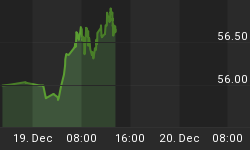Over 100 banks are opening soon, buying junk bonds is gaining popularity and emerging markets are the trendy investment. Sound familiar? Europe appears to be returning to some bad investment habits.
The following is an excerpt from the February issue of Global Market Perspective. For a limited time, you can visit Elliott Wave International to download the rest of the 100+ page issue free.
Just as in 2007, huge bullishness in concert with no fear is cropping up. Central and Eastern European (CEE) debt markets, for example, are clearly back on investors' radar. UniCredit of Italy plans to open 100 banks across the region, while Erste Bank of Austria is preparing 70 more in Romania. Raiffeisen International, also of Austria, is getting ready to launch an internet-based banking system to serve the region as well.
Likewise, the European junk bond market, which effectively died after the financial crisis, has bounced back to life along with the rally. At 70%, total returns on western European junk bonds were more than double those on the FTSE All Share Index in 2009. Moreover, the trend is accelerating. The week of January 11 was the second largest week ever seen in European junk bonds, according to the Financial Times, as companies sold $11.7 billion worth of high-yield debt. Predictably, bankers are ramping up their expectations for 2010. Experts forecast about €50 billion in new issuance in the coming year, a number that nearly doubles what the market has produced in its best years. Says one portfolio manager discussing the market: A "virtuous-circle effect" will take place in 2010. "There was a time when German companies, for example, would think it was a social insult to be a junk bond, but now you are seeing [them] use the market as a mainstream tool for financing."
That's on the corporate side. On the sovereign side, shaky debtors and giddy investors are also fully recommitted. For the first time ever, Moody's upgraded JP Morgan's Emerging Market Sovereign Bond Index from "junk" to "investment grade." January's upgrade occurred in spite of the sovereign default risk growing in countries like Greece, Spain, and Italy (see Secondary Markets), but that's not stopping yield-starved investors from buying.
Barings Asset Management and HSBC are reportedly increasing their exposure to emerging markets. So is bond giant, Pimco, which calls emerging-market debt an "asset class on the upward path." Its portrayal, however, merely describes the last 10 months of market action. The index shown on the previous page tracks emerging-market bond yields in their local currency. Just like trader sentiment numbers, yields are firmly back to pre-crisis levels. But extrapolating the last 10 months forward may be one of the most dangerous bets around. When the financial community recklessly returns to play with the loaded firearms from the prior mania, it's a tell that a bear-market rally is ending. Most will again shoot themselves in the foot.
Read the rest of this issue now free! You'll get 100+ pages of insights about:
- World Stock Markets
- Global Interest Rates
- International Currency Relationships
- Metals and Energy
- Social Trends and Observations
- More
Visit Elliott Wave International to download your free 100+ page issue.















